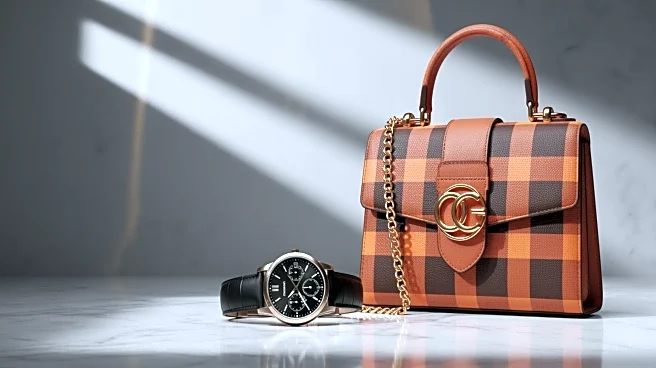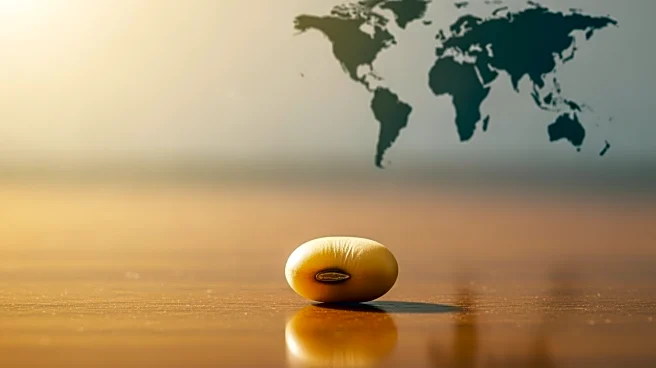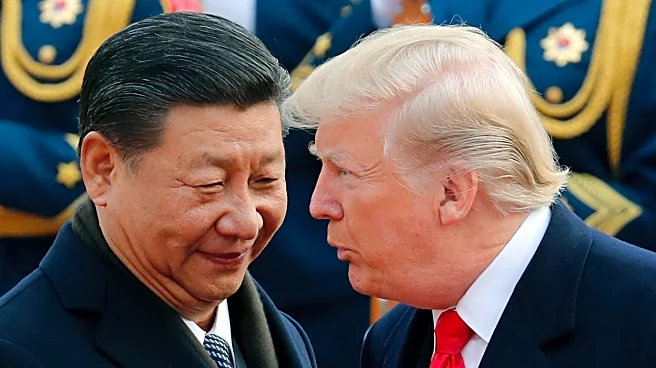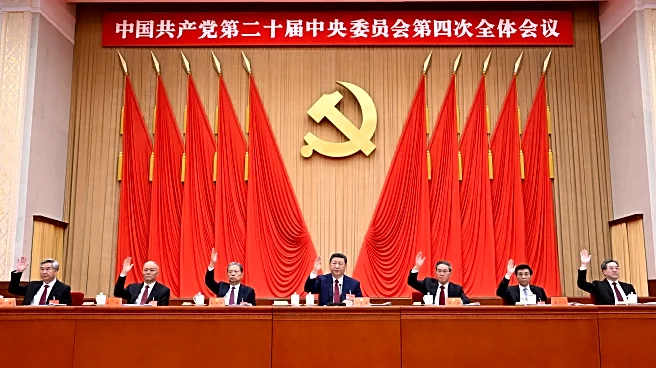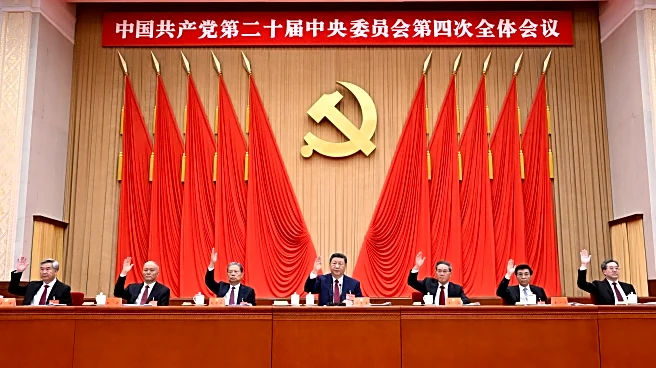What's Happening?
Luxury brands such as LVMH, Hermès, and L'Oréal have reported a slight improvement in their performance in China, suggesting a potential rebound in the market. This comes after a period of economic challenges in China, including a strict COVID-19 lockdown,
a burst property bubble, and a stock market downturn, which have all dampened consumer spending on high-end goods. Companies like Moncler and Crocs have highlighted their success in China, attributing it to strategic partnerships and improved retail distribution. However, Estée Lauder continues to face challenges due to its reliance on travel retail, which has been severely impacted by the pandemic. The upcoming earnings reports from brands like Adidas, Next, and Puma are expected to provide further insights into the market's recovery.
Why It's Important?
The performance of luxury brands in China is a significant indicator of the global luxury market's health, as China is a major consumer of high-end goods. A rebound in this market could signal a broader economic recovery, benefiting companies with significant exposure to Chinese consumers. However, the situation remains precarious, with the potential for further economic disruptions. The ongoing trade tensions between the U.S. and China, including threats of tariffs, add another layer of uncertainty. The outcome of these tensions could have wide-reaching implications for global trade and economic stability, affecting industries beyond luxury goods.
What's Next?
The upcoming Singles Day holiday on November 11 will be a critical test of Chinese consumer sentiment and spending power. Additionally, President Trump's planned meeting with China's leader, Xi Jinping, to negotiate trade issues could influence future economic relations between the two countries. The fashion industry is cautiously optimistic but remains prepared for potential setbacks. The results of these events will likely shape the strategies of luxury brands and other industries reliant on the Chinese market.
Beyond the Headlines
The slight rebound in China's luxury market highlights the resilience of certain brands and their ability to adapt to changing market conditions. However, it also underscores the vulnerability of global markets to geopolitical tensions and economic fluctuations. The reliance on the Chinese market by many luxury brands raises questions about diversification and the need for strategies that can withstand regional economic downturns.
